-
Differential settlements monitoring in railway transition zones using satellite-based remote sensing techniques Comput. Aided Civ. Infrastruct. Eng. (IF 8.5) Pub Date : 2025-06-04
J. N. Varandas, Y. Zhang, J. Shi, S. Davies, A. FerreiraRailway track transitions are prone to uneven settlements and track geometry degradation. Traditional monitoring methods are limited in coverage, which highlights the need for novel solutions. This study proposes a method that systematically integrates the high spatial resolution of Persistent Scatterer Interferometric Synthetic Aperture Radar (PS-InSAR) with the broader coverage of Small Baseline
-
General correlation between R3 test results and compressive strengths for five families of supplementary cementitious materials Cement Concrete Comp. (IF 10.8) Pub Date : 2025-06-04
Imane Koufany, Angeles G. De la Torre, Cinthya Redondo-Soto, Isabel Santacruz, Ana Cuesta, Daniela Gastaldi, Fulvio Canonico, Oliver Mazanec, Miguel A.G. ArandaThe incorporation of locally available supplementary cementitious materials (SCMs) in cement blends is essential for reducing the environmental impact of construction. However, assessing the pozzolanic kinetics, and thus the pozzolanic contribution at a given age, is challenging due to temperature differences between the two main evaluation methods: ASTM C1897 (40 °C, continuous heat release) and ASTM
-
A Carbon Sequestered Superhydrophobic Mortar with Enhanced Anti-chloride Ions Penetration and Frost Resistance Cement Concrete Comp. (IF 10.8) Pub Date : 2025-06-04
Cong Wang, Yifeng Ling, Lijun Wang, Bo Yang, Weizhuo ShiSuperhydrophobic cementitious composites are potential candidates to effectively mitigate long-term performance deterioration of concrete buildings due to external water infiltration. However, traditional superhydrophobic modification leads to a significant reduction in compressive strength. To address this, a carbon sequestered superhydrophobic mortar with a water contact angle of 153°–162° and an
-
Effect of recycled concrete powder on the evolution of the static yield stress of cement paste Cement Concrete Comp. (IF 10.8) Pub Date : 2025-06-01
Tian Li, Rita Nogueira, Jorge de Brito, Paulina Faria, Jiaping LiuCurrent research on recycled concrete powder (RCP) influencing the cement-based material's rheology primarily focuses on the initial rheology, with limited attention given to long-term rheology (rest time over 60 min). This work investigates RCP influencing the paste's static yield stress evolving with time (10–120 min). Results show that RCP significantly influences the cement paste's static yield
-
New insights into hydration of MgO in the presence of polycarboxylate ether superplasticizers Cement Concrete Comp. (IF 10.8) Pub Date : 2025-05-31
Morteza Tayebi, Nirrupama Kamala Ilango, Hoang Nguyen, Ali Rezaei Lori, Navid Ranjbar, Valter Carvelli, Paivo KinnunenMgO-based cement offers a promising solution to lower the carbon footprint compared to that of Portland cement, where MgO is sourced from fossil-free minerals. The hydration of MgO plays a key role in these cements. However, MgO required higher water demand to achieve a workable mix, which poses drawbacks in microstructure and strength development. In this work, we investigated the effects of 7 polycarboxylate-based
-
Long-term salt freeze-thaw resistance of polyvinyl alcohol (PVA) modified mortar: The role of molecular structure Cement Concrete Comp. (IF 10.8) Pub Date : 2025-06-03
Qian Deng, Xuzhe Zhang, Shaohua Li, Qingliang YuPolyvinyl alcohol (PVA) has shown potential in developing cost-effective anti-freezing technologies for concrete. However, its effectiveness in reducing scaling and performance stability under combined salt freeze-thaw conditions and the involved mechanism remains unclear. This investigation systematically evaluates the salt freeze-thaw resistance of cementitious systems modified with PVA variants
-
Impact of Ca/Si and Al/Si ratios on the composition and structure of the alumina-silica gel formed by wet carbonation of synthesized C-S-H in blends with portlandite and ettringite Cem. Concr. Res. (IF 10.9) Pub Date : 2025-06-02
Jiayi Song, Maciej Zajac, Mohsen Ben Haha, Jørgen SkibstedIt is well-established that aqueous carbonation of recycled concrete paste produces calcium carbonate and an amorphous alumina-silica gel as the main products. However, sparse information is available about the structure and composition of the gel. This work focuses on these properties by carbonation of synthesized C-S-H (Ca/Si = 1.75) alone and blended with portlandite and ettringite. Wet carbonation
-
Influences of elevated temperature on the passivation and depassivation properties of reinforcing steel in concrete environment Cement Concrete Comp. (IF 10.8) Pub Date : 2025-06-03
Chandra Sekhar Das, Haibing Zheng, Jian-Guo DaiUnderstanding the chloride threshold value (CTV) under various environmental conditions is essential for condition assessment and service life estimation of reinforced concrete (RC) structures susceptible to corrosion damage. This study investigates the influence of three exposure temperatures (25 ˚C, 35 ˚C and 45 ˚C) on the passivation and depassivation (i.e., corrosion initiation) of steel bars in
-
Tunnel lining segmentation from ground‐penetrating radar images using advanced single‐ and two‐stage object detection and segmentation models Comput. Aided Civ. Infrastruct. Eng. (IF 8.5) Pub Date : 2025-06-03
Byongkyu Bae, Yongjin Choi, Hyunjun Jung, Jaehun AhnRecent advances in deep learning have enabled automated ground‐penetrating radar (GPR) image analysis, particularly through two‐stage models like mask region‐based convolutional neural (Mask R‐CNN) and single‐stage models like you only look once (YOLO), which are two mainstream approaches for object detection and segmentation tasks. Despite their potential, the limited comparative analysis of these
-
Deep learning for computer vision in pulse-like ground motion identification Comput. Aided Civ. Infrastruct. Eng. (IF 8.5) Pub Date : 2025-05-28
Lu Han, Zhengru TaoNear-fault pulse-like ground motions can cause severe damage to long-period engineering structures. A rapid and accurate identification method is essential for seismic design. Deep learning offers a solution by framing pulse-like motion identification as an image classification task. However, the application of deep learning models faces multiple challenges from data and models for pulse-like motion
-
Characterization of the inhomogeneity of mineralized steel slag compacts (MSSCs) and its effect on mechanical properties and damage Cement Concrete Comp. (IF 10.8) Pub Date : 2025-06-02
Qinglong Qin, Boyang Su, Zihan Ma, Rui Sun, Yong Zheng, Kai Cui, Peiliang Shen, Chi Sun PoonIn this study, the spatial and temporal evolution of mineralized steel slag compacts (MSSCs) in terms of mineral composition, microstructure, and micromechanical properties is systematically investigated to characterize and quantify their inhomogeneity. Furthermore, the impact of the inhomogeneity in MSSC on its mechanical behavior and damage mechanisms is explored to uncover the intrinsic connection
-
Cost‐effective excavator pose reconstruction with physical constraints Comput. Aided Civ. Infrastruct. Eng. (IF 8.5) Pub Date : 2025-06-02
Zongwei Yao, Chen Chen, Hongpeng Jin, Hongpu Huang, Xuefei Li, Qiushi BiExcavator safety and efficiency are crucial for construction progress. Monitoring their 3D poses is vital but often hampered by resource and accuracy issues with traditional methods. This paper presents a method to reconstruct the 3D poses of excavators using a cost‐effective monocular camera while considering physical constraints. The approach involves two steps: deep learning to identify 2D key points
-
Microstructure tailoring of internal curing agents: modified cement particles/superabsorbent polymers composites balancing strength and shrinkage mitigation Cem. Concr. Res. (IF 10.9) Pub Date : 2025-05-31
Yasen Li, Cheng Zhang, Yangyang Xiang, Yanru Chen, Tingzhong Li, Honghai Cui, Guoxing SunSuperabsorbent polymers (SAPs) are widely studied as internal curing agents in high-performance concrete, but their adverse effects on pore structure remain a challenge. This study introduces an innovative cement-integrated SAP (CiSAP) by modifying the interface, using KH570-modified cement (KMC) as the functional core. By optimizing KMC content, the microstructure was improved, leading to enhanced
-
Effect of Ca(OH)2 on the immobilization of simulated radioactive borate waste in metakaolin-based geopolymer waste forms Cem. Concr. Res. (IF 10.9) Pub Date : 2025-05-31
Byoungkwan Kim, Brant Walkley, John L. Provis, Hyun-min Ma, Wooyong Um -
Theoretical and experimental exploration of roller-compacted Engineered Cementitious Composites (ECC) Cement Concrete Comp. (IF 10.8) Pub Date : 2025-06-01
He Zhu, Jinping Ou, Dongsheng Li, Aamer Bhutta, Georgios Zapsas, Waleed Nasser, Mohammed Mehthel, Oscar Salazar, Victor C. LiThe construction methods of Engineered Cementitious Composites (ECC) are crucial for ensuring the structural performance of ECC pavements, which have demonstrated superior fatigue life and heavy traffic capacity. However, the commonly used rolling compacted (RC) method for pavement has never been explored for RC-ECC pavement. In this study, RC-ECC was developed via theoretical and experimental methods
-
Corrosion resistance of AISI 304 stainless steel in belitic calcium sulfoaluminate cement Cement Concrete Comp. (IF 10.8) Pub Date : 2025-05-31
Zhi Geng, Xinhao Bi, Jinjie ShiAs a promising sustainable alternative to ordinary Portland cement (OPC), there are still doubts about the protective properties of belitic calcium sulfoaluminate (BCSA) cement to the embedded steel, especially for its low pore solution alkalinity and high sulfate concentration. To guarantee the corrosion resistance of steel reinforcement in BCSA cement, using corrosion-resistant steels, such as stainless
-
Integrating Fe2O3-Rich Soda Residue into Alkali-Activated Materials: Evaluation of Mechanical and Structural Properties Cement Concrete Comp. (IF 10.8) Pub Date : 2025-05-31
Xianhui Zhao, Gaoqing Zhang, Haoyu Wang, Hongqi Yang, Xian-en Zhao, Renlong ZhaoSoda residue, a by-product of the Na2CO3 industry, is recognized for its high alkalinity, which can lead to corrosion and the deposition of iron oxide (Fe2O3) from industrial procedures and lab infrastructure. This study delves into the effects of incorporating Fe2O3-rich soda residue (FSR) into alkali-activated materials (AAMs), specifically alkali-activated fly ash (FA) and/or slag powder (SP), on
-
Studying Water Permeation Behavior of Cracked ECC based on Lattice Boltzmann Method and X-ray Computed Tomography Cement Concrete Comp. (IF 10.8) Pub Date : 2025-05-31
Zhiming Pang, Biqin Dong, Cong Lu, Yiming Yao, Victor C. LiEngineered Cementitious Composites (ECC) are high-performance cementitious materials that exhibit multiple cracking and self-controlled width under uniaxial loading, which can lead to a low permeability. Quantifying the water flow behavior of an ECC crack is a precondition for its practical application. However, the lack of characterization for internal crack profiles and advanced modeling for water
-
Highly activated pozzolanic materials to develop sustainable concrete: a new perspective from photoexcited nano-TiO2 Cement Concrete Comp. (IF 10.8) Pub Date : 2025-05-28
Jihong Jiang, Yanchun Miao, Qianping Ran, Yali Li, Yunjian Li, Zongshuo Tao, Zeyu LuFly ash, a by-product of coal combustion, is a pozzolanic solid waste with annual production of 1.63 billion tonnes, which has been widely used to replace cement clinker to develop sustainable concrete. However, the incorporation of high volumes of inert fly ash significantly reduces the early mechanical strength of concrete due to its low pozzolanic activity. This study presents an innovative strategy
-
Signal noise estimation and removal of sub‐mm 3D pavement texture data using 1D residual denoising network Comput. Aided Civ. Infrastruct. Eng. (IF 8.5) Pub Date : 2025-06-01
Guolong Wang, Kelvin C. P. Wang, Guangwei Yang, Joshua Q. Li, Amir GolalipourSignal noise removal is an indispensable and critical procedure in obtaining clean pavement texture data for reliable pavement evaluation and management. Nevertheless, the presently established denoising approaches to pavement texture data still rely on traditional techniques that have long struggled with removing noise accurately and consistently. This paper innovatively initiates a one‐dimensional
-
Automated Intelligent Modal Identification and Tracking for High-Rise Buildings without Prior Information J. Build. Eng. (IF 6.7) Pub Date : 2025-05-31
Kang Zhou, Jia-Le Shi, Ji-Yang Fu, Jing Song, Ming-Gang Duan, Yun-Cheng HeAutomated modal identification and tracking of high-rise buildings are challenging due to complex ambient excitations, closely spaced modes, nonlinear and time-varying modal parameters, and demands for high efficiency and accuracy, yet critical for structural health monitoring (SHM) to detect potential damage and ensure structural safety. This study proposes an automated intelligent modal identification
-
Optimal Stochastic Energy Management of Smart Building Microgrids with Electric Mobility and Flexibility Enhancement J. Build. Eng. (IF 6.7) Pub Date : 2025-05-31
Mohammed Alruwaili, Abdulaziz Alanazi, Mohana AlanaziThis study explores optimal energy management in smart buildings designed as microgrid systems, where the growing use of renewable energy and electric mobility creates challenges due to uncertainty and variability in supply and demand. The main goal is to reduce operational costs, cut emissions, and improve energy flexibility under uncertain conditions. To achieve this, a stochastic optimization framework
-
Optimization study on artificial ground freezing in elliptical tunnel construction: A comprehensive analysis of groundwater flow and thermodynamic parameters of soil Tunn. Undergr. Space Technol. (IF 6.7) Pub Date : 2025-05-31
Gyu-Hyun Go, Viet Dinh LeRecently, there has been a growing interest in the use of Artificial Ground Freezing (AGF) to temporarily stabilize unstable ground at tunnel construction sites. Recognizing that the effectiveness of this method is significantly influenced by groundwater flow, it is crucial to conduct a sophisticated thermal-hydraulic coupling analysis to assess the potential adverse effects of groundwater flow in
-
Network analysis and graph neural network (GNN)-based link prediction of construction hazards Autom. Constr. (IF 9.6) Pub Date : 2025-05-30
Brian H.W. Guo, Qilan Li, Wen Yi, Bowen Ma, Zhe Zhang, Yonger ZuoHazard recognition is critical for construction safety, especially for accident prevention. Traditional methods often fail to capture the dynamic and interdependent nature of construction hazards. To address this issue, this paper proposes a network-based framework that conceptualizes construction hazards as dynamic interactions between objects with hazardous attributes. A link prediction model using
-
Data integration for space-aware Digital Twins of hospital operations Autom. Constr. (IF 9.6) Pub Date : 2025-05-30
Nicola Moretti, Yin-Chi Chan, Momoko Nakaoka, Anandarup Mukherjee, Jorge Merino, Ajith Kumar ParlikadHealthcare facilities are complex systems where operational efficiency depends on space, processes, resources, and logistics. While many studies propose process-simulation-based improvements, few dynamically consider the built space’s effect on process efficiency. The critical challenge here is the effective integration of data from these disparate domains. This article addresses this challenge by
-
A novel pressure-resistant isolation layer for tunnels and performance analysis Tunn. Undergr. Space Technol. (IF 6.7) Pub Date : 2025-05-30
Qingcheng Yang, Ping Geng, Yan Zhao, Song Wang, Changjian Chen, Qi WangAfter the installation of rubber isolation layer in tunnels, surrounding rock convergence may apply permanent pressure on the tunnel, compressing the isolation material. This can reduce its elasticity, impairing its recovery capacity and potentially leading to failure. Therefore, this paper proposes a new type of pressure-resistant isolation layer that embeds the compressive layer into the energy dissipation
-
Study on effect of fibers reinforcement on sand soil liquefaction mitigation and shield tunnel stability under seismic conditions Tunn. Undergr. Space Technol. (IF 6.7) Pub Date : 2025-05-30
Jun Shen, Xiaohua Bao, Xiangsheng Chen, Zhizao Bao, Hongzhi CuiFiber reinforcement has been demonstrated to mitigate soil liquefaction, making it a promising approach for enhancing the seismic resilience of tunnels in liquefiable strata. This study investigates the seismic response of a tunnel embedded in a liquefiable foundation locally improved with carbon fibers (CFs). Consolidated undrained (CU), consolidated drained (CD), and undrained cyclic triaxial (UCT)
-
The effect of ground improvement materials on the impact resistance and behavior of buried pipes: An experimental and numerical study Tunn. Undergr. Space Technol. (IF 6.7) Pub Date : 2025-05-30
Mohammad Manzoor Nasery, Elif Ağcakoca, Sedat Sert, Mohammad Saber Sadid, Zeynep YamanBuried pipes are subjected to static and dynamic loads depending on their areas of use. To mitigate the risk of damage caused by these effects, various materials and reinforcement methods are utilized. In this study, five buried uPVC pipes designed in accordance with ASTM D2321 standards were reinforced with three different ground improvement materials: Geocell, Geonet, and Geocomposite, and experimentally
-
Dynamic characteristics and energy absorption mechanism of prestressed anchorage support Tunn. Undergr. Space Technol. (IF 6.7) Pub Date : 2025-05-30
Qi Wang, Mingzi Wang, Shuo Xu, Bei Jiang, Rugang DuanIn deep underground engineering construction and resource exploitation, complex conditions such as high stress and strong disturbance are often encountered, and dynamic disasters such as rockburst and coal burst are prone to occur. As a common anchorage support form in deep underground engineering, bolts and cables are often applied with high prestress to improve the bearing capacity of surrounding
-
A novel approach to reduce the shrinkage of cement-based materials: pH-responsive admixture from hydrophilic to hydrophobic transformation Cem. Concr. Res. (IF 10.9) Pub Date : 2025-05-29
Simai Wang, Xiao Liu, Xiaokai Niu, Xinru Sun, Qian Xu, Zhitian Xie, Lei Lu, Yurui Xu, Minghui Jiang, Xinxin Li, Ziming Wang, Suping Cui -
Automated detection and quantification of structural component dimensions using segment anything model (SAM)-based segmentation Autom. Constr. (IF 9.6) Pub Date : 2025-05-29
Gang Xu, Yingshui Zhang, Qingrui Yue, Xiaogang LiuThis paper presents a method for automatic detection and quantification of full cross-sectional dimensions of structural components using oblique photography and the SAM-dimension (Segment Anything Model-dimension) model. Unlike traditional methods that measure only a single cross-section, this approach enables full cross-sectional dimension detection across the entire component, enhancing efficiency
-
Geometrically consistent energy-derivative attention CNN for semantic segmentation of multicategory structural damage Autom. Constr. (IF 9.6) Pub Date : 2025-05-29
Xin Jing, Zhanxiong Ma, Tao Zhang, Yu Wang, Ruixian Huang, Yang Xu, Qiangqiang ZhangEngineering structural damage often exhibits diverse and complex features across multiple scales within small-scale regions of interest (ROI), complicating post-earthquake assessments. This paper proposes an interpretable deep learning (DL) framework for semantic segmentation of multicategory damage. Energy-derivative attention modules are integrated into convolutional neural networks (CNNs) to enhance
-
Subsurface utility detection and augmented reality visualization using GPR and deep learning Autom. Constr. (IF 9.6) Pub Date : 2025-05-29
Mahmoud Hamdy Safaan, Mahmoud Metawie, Mohamed MarzoukRecent urban revitalisation requires advanced utility management and innovative technology to achieve high-precision utility management. This paper introduces an automated framework that surpasses traditional methods of subsurface utility detection by integrating Ground Penetrating Radar (GPR), deep learning, and Augmented Reality (AR) to provide an advanced solution for subsurface detection and visualization
-
Semi-autonomous aerial robot for ultrasonic assessment of crack depth and surface velocity in concrete structures Autom. Constr. (IF 9.6) Pub Date : 2025-05-29
Luca Belsito, Diego Marini, Luca Masini, Matteo Ferri, Miguel Ángel Trujillo, Antidio Viguria, Alberto RoncagliaThe measurement of ultrasonic surface velocity in concrete and the ultrasonic Time Of Flight method for estimating the depth of surface opening cracks in concrete are important techniques for maintenance of constructions, which are currently performed manually. This paper demonstrates the possibility to automate these measurements by means of an Unmanned Aerial Vehicle (UAV) equipped with a robotic
-
End‐to‐end frequency enhancement framework for GPR images using domain‐adaptive generative adversarial networks Comput. Aided Civ. Infrastruct. Eng. (IF 8.5) Pub Date : 2025-05-29
Hancheng Zhang, Yuanyuan Hu, Qiang Wang, Zhendong Qian, Pengfei LiuGround‐penetrating radar (GPR) offers nondestructive subsurface imaging but suffers from a trade‐off between frequency and penetration depth: High frequencies yield better resolution with limited depth, while low frequencies penetrate deeper with reduced detail. This paper introduces a novel frequency enhancement method for GPR images using domain‐adaptive generative adversarial networks. The proposed
-
Early detection and location of unexpected events in buried pipelines under unseen conditions using the two‐stream global fusion classifier model Comput. Aided Civ. Infrastruct. Eng. (IF 8.5) Pub Date : 2025-05-29
Sun‐Ho Lee, Choon‐Su Park, Dong‐Jin YoonFailure of buried pipelines can result in serious impacts, such as explosions, environmental contamination, and economic losses. Early detection and location of unexpected events is crucial to prevent such events. However, conventional monitoring methods exhibit limited generalization performance under varying environmental and operational conditions. Furthermore, the cross‐correlation‐based time difference
-
Identifying urban energy-vulnerable areas: a machine learning approach J. Build. Eng. (IF 6.7) Pub Date : 2025-05-29
Antonio J. Aguilar, María Fernanda Guerrero-Rivera, Maria L. de la Hoz-TorresAccess to energy services is essential for preserving health and well-being. However, energy poverty is a challenge affecting millions of citizens worldwide, which could even worsen due to the predicted severity of climate change. Energy poverty vulnerability and social problems are often linked to energy-inefficient buildings. Thus, identifying energy-inefficient dwellings in energy-vulnerable urban
-
Prediction on the degradation process of steel fiber-reinforced concrete lining of a ‘Deep Tunnel’ under sulfuric acid corrosion Tunn. Undergr. Space Technol. (IF 6.7) Pub Date : 2025-05-29
Qihang Xu, Xin HuangSulfuric acid corrosion poses a significant threat to urban ‘deep tunnel’ systems, exacerbating flood disasters and causing economic losses. Therefore, it is crucial to predict the deterioration process of steel fiber-reinforced concrete under sulfuric acid corrosion. This study developed four predictive models for the degradation process of steel fiber-reinforced concrete of ‘deep tunnel’ lining during
-
Identification of segment joint and automatic segmentation for shield tunnel based on LiDAR detection Tunn. Undergr. Space Technol. (IF 6.7) Pub Date : 2025-05-29
Shui-Long Shen, Jia-Xuan Zhang, Yu-Lin Chen, Annan ZhouThis study presents a novel method for identifying joints and automatically segmenting shield tunnels using light detection and ranging (LiDAR). In cylindrical coordinates, the Hough transform is used to extract feature LiDAR data corresponding to ring joints at different azimuths. This feature extraction using LiDAR data facilitates the computation of ring joint feature coordinates and average ring
-
On the impact of urban climate and heat islands on building energy performance: A critical review Energy Build. (IF 6.6) Pub Date : 2025-05-29
Farzad Hashemi, Gerald MillsUrban Heat Islands (UHIs) substantially alter local climates, yet their impacts on building energy performance remain inconsistently quantified and poorly integrated into simulation workflows, energy codes, and planning practice. This review critically synthesizes U.S.-based studies that model the impacts of the UHI effect on building heating and cooling loads, revealing substantial variability in
-
Synergetic regulation of hydration and carbonation of reactive MgO cement by amino acids Cem. Concr. Res. (IF 10.9) Pub Date : 2025-05-28
Shuang Liang, Xiangming Zhou, Pengkun HouThis study investigates the role of L-aspartic (L-Asp) in regulating the crystallisation of hydrated magnesium carbonates (HMCs) in carbonation-cured reactive MgO (RM). The effects of L-Asp on hydration kinetics, bulk density, compressive strength, phase composition, carbon sequestration, microstructure and morphology of RM composites were examined to understand its influence on the coupled hydration
-
Understanding the role of C-S-H seeds and sulfate in the lightweight cementitious composites containing fly ash cenospheres Cement Concrete Comp. (IF 10.8) Pub Date : 2025-05-28
Wenxiang Cao, Xuesen Lv, Xingang Wang, Jian-Xin Lu, Juhyuk Moon, Fubing Zou, Weichen Tian, Chi Sun PoonMatrix strength and interfacial bonding between aggregate and matrix are critical factors influencing the performance of lightweight cementitious composites (LCC). This study proposes an environmentally friendly and efficient strategy for developing high-performance fly ash cenospheres (FAC)-containing LCC by combining sodium sulfate (SS) and calcium-silicate-hydrate (C-S-H) seeds. Moreover, the roles
-
Knowledge graph for policy- and practice-aligned life cycle analysis and reporting Autom. Constr. (IF 9.6) Pub Date : 2025-05-28
Conor Shaw, Flávia de Andrade Pereira, Martijn de Riet, Cathal Hoare, Karim Farghaly, James O’DonnellThe built environment is a key leverage point for policy intervention to combat climate change and the statutory reporting of financial and non-financial indicators over the asset lifecycle is increasingly required. This poses significant information management challenges in a sector characterised by complexity. Contributions to-date which address Life Cycle Asset Information Management (LCAIM) remain
-
A surface electromyography–based deep learning model for guiding semi‐autonomous drones in road infrastructure inspection Comput. Aided Civ. Infrastruct. Eng. (IF 8.5) Pub Date : 2025-05-28
Yu Li, David Zhang, Penghao Dong, Shanshan Yao, Ruwen QinWhile semi‐autonomous drones are increasingly used for road infrastructure inspection, their insufficient ability to independently handle complex scenarios beyond initial job planning hinders their full potential. To address this, the paper proposes a human–drone collaborative inspection approach leveraging flexible surface electromyography (sEMG) for conveying inspectors' speech guidance to intelligent
-
Learning error distribution kernel‐enhanced neural network methodology for multi‐intersection signal control optimization Comput. Aided Civ. Infrastruct. Eng. (IF 8.5) Pub Date : 2025-05-28
H. Wang, Y. Wang, W. Li, A. B. Subramaniyan, G. ZhangTraffic congestion has substantially induced significant mobility and energy inefficiency. Many research challenges are identified in traffic signal control and management associated with artificial intelligence (AI)‐based models. For example, developing AI‐driven dynamic traffic system models that accurately capture high‐resolution traffic attributes and formulate robust control algorithms for traffic
-
Machine learning models for predicting the International Roughness Index of asphalt concrete overlays on Portland cement concrete pavements Comput. Aided Civ. Infrastruct. Eng. (IF 8.5) Pub Date : 2025-05-28
K. Kwon, Y. Yeom, Y. J. Shin, A. Bae, H. ChoiAlthough estimating the International Roughness Index (IRI) is crucial, previous studies have faced challenges in addressing IRI prediction for asphalt concrete (AC) overlays on Portland cement concrete (PCC) pavements. This study introduces machine learning to predict the IRI of AC overlays on PCC pavements, focusing on incorporating pre‐overlay treatments to reflect their composite characteristics
-
A one-year field-scale experiment on the daylighting and building thermal performance of thermotropic window in subtropical area J. Build. Eng. (IF 6.7) Pub Date : 2025-05-28
Xiaoqiang Hong, Fan Yang, Yihan Huang, Feng ShiThermotropic (TT) glazing, which enable dynamic solar modulation through light-scattering behaviors, has great potential to enhance building performance in energy efficiency, visual and thermal comfort. Many researches have been carried out by building performance simulation or short-term laboratory-scale experiments. In this work, a one-year field-scale experiment was conducted in Zhangzhou (a subtropical
-
Air pollution in residential kitchens: Sources, health hazards and control technologies J. Build. Eng. (IF 6.7) Pub Date : 2025-05-28
Guozhu Li, Lin Chen, Shuai Wang, Kailiang Huang, Chong Meng, Qingqin Wang, Shui YuAs the concept of “healthy kitchen” continues to take root deeply in the minds in public consciousness, growing emphasis has been placed on both the health impacts of airborne pollutants in kitchen environments and the control of residential kitchen air pollution. In order to better create a healthy environment in residential kitchens, this paper reviewed and summarized the emission factors of kitchen
-
Influence of leading-edge obstacles on flow field and noise of axial flow fan for building ventilation J. Build. Eng. (IF 6.7) Pub Date : 2025-05-28
Tao Yu, Hailu Yao, Ruiyang Mi, Yongxing Song, Peng LiuAxial fans are widely employed in ventilation and air-conditioning systems, yet the associated noise pollution remains a significant challenge. This study investigates the influence of leading-edge modifications on the aerodynamic performance and noise characteristics of an axial flow fan utilized in building ventilation. Three types of leading-edge obstacles, including tetrahedral, hemispherical,
-
Multi-objective optimization of capacity configuration for district heating and cooling system based on life cycle cost and annual carbon dioxide emissions J. Build. Eng. (IF 6.7) Pub Date : 2025-05-28
Yucheng Ren, Zhili Ren, Gang Zou, Pengcheng Zhang, Xueqi Xu, Yimin XiaoDistrict heating and cooling (DHC) systems with energy storage are highly promising due to their high economic viability and energy-saving potential. However, inadequate consideration of time-of-use (TOU) pricing, annual load demand variations and control strategies often leads to excessive capacities and low energy efficiency. A multi-objective optimization (MOO) model is established by combining
-
Black carbon concentration and health impact in urban school buildings in South Korea: Focus on student behavior patterns J. Build. Eng. (IF 6.7) Pub Date : 2025-05-28
Dongjun Park, Sihyeon Kim, Kyungmo Kang, Joosang Lee, Hooseung Na, Taeyeon KimThis study investigates students' exposure to indoor black carbon (BC) in classrooms, with a focus on how student behavior influences indoor BC concentrations. The significance of this research lies in the potential health risks associated with prolonged exposure to BC, particularly in educational buildings where children spend extended periods. This study aimed to assess indoor BC concentrations,
-
An event-triggered stochastic model predictive control of indoor thermal environment for building energy management J. Build. Eng. (IF 6.7) Pub Date : 2025-05-28
Ning He, Jiawen Guo, Yanxin Li, Yubo Quan, Shuting Xiong, Fuan Cheng, Danlei ChuStochastic model predictive control (SMPC) considering randomness constraints for weather characteristics has been widely adopted to achieve energy diminution and human comfort regulation for building energy management (BEM). However, the substantial computational loads involved in solving the complex optimization problem pose a significant challenge to the real-time implementation of SMPC in actual
-
A performance simulation of the coupled solar wall and earth-air heat exchanger system heating technology J. Build. Eng. (IF 6.7) Pub Date : 2025-05-28
Qinghua Guo, Peijun Sun, Fei Xia, Ximeng Lv, Sijia WangHeating constitutes a significant portion of the total energy consumption over a building's life cycle. This is particularly pronounced in rural areas, where winter heating can account for over 50 % of the total energy demand. Consequently, the adoption of green and energy-efficient heating methods is of paramount importance for energy conservation and emission reduction in rural residential buildings
-
Evaluating the contribution of on-site industrialized construction technologies towards industrialization goals J. Build. Eng. (IF 6.7) Pub Date : 2025-05-28
Shengbin Ma, Zhongfu Li, Ruiyan ZhengIndustrialized construction (IC), encompassing off-site construction (OSC) and on-site industrialized construction (OIC), is pivotal to promoting sustainability in the construction sector. However, existing research in the construction industry has focused predominantly on the advantages of OSC, while overlooking the value of OIC to the broader industrialization of the building sector. In this paper
-
An online dynamic model based on Physical-Constraint Broad Learning System for extrapolation scenarios of chillers Energy Build. (IF 6.6) Pub Date : 2025-05-28
Anjun Zhao, Qihang Ren, Wei Quan, Na Zhang, Liu WeiChillers account for the majority of energy consumption in central air-conditioning refrigeration stations. However, conventional models lack strong out-of-sample generalization, making it difficult to accurately reflect chiller performance variations under multiple operating conditions. Consequently, there is a lack of reliable multi-condition performance data to support energy-efficient regulation
-
Semantic Digital Twinning for Cost-Optimal HVAC Operation: Real-Time Application to a House with Smart Thermostats and PV/Battery under a Time-of-Use Tariff Energy Build. (IF 6.6) Pub Date : 2025-05-28
Matin Abtahi, Luis Rueda, Benoit Delcroix, Andreas AthienitisSemantic digital twinning has traditionally supported design coordination, documentation, and planning during the early stages of building projects. However, its application in building operation and maintenance—particularly in real time—remains limited. This study proposes a methodology for cost-optimal HVAC load management using an operational digital twin, and demonstrates its real-time application
-
-
Insight into the mechanism of sulfate and magnesium ions on chloride diffusion and phase assemblage in limestone calcined clay cement (LC3) Cement Concrete Comp. (IF 10.8) Pub Date : 2025-05-27
Shukai Cheng, Kang Chen, Xuyong Chen, Yibing Zuo, Jian-Xin LuLimestone calcined clay cement (LC3), a low-carbon cementitious material, has demonstrated outstanding resistance to chloride ion penetration. However, the real environment is rich in many harmful ions beyond chloride ions, including sulfate and magnesium ions, making the interactions among these ions highly complex. This study systematically explores the impact of sulfate ions and the synergistic
-
Semantic digital twin framework for monitoring construction workflows Autom. Constr. (IF 9.6) Pub Date : 2025-05-27
Yuan Zheng, Alaa Al Barazi, Olli Seppänen, Hisham Abou-Ibrahim, Christopher GörschAs construction workflows become increasingly dynamic, there is a growing need for Digital Twins (DTs) to support integrated, real-time workflow monitoring. However, establishing DTs in construction remains challenging due to fragmented data sources and the lack of systematic semantic integration methods. This paper investigates how semantic web ontologies can be systematically applied to establish
-
From fragmented data to unified construction safety knowledge: A process-based ontology framework for safer work Autom. Constr. (IF 9.6) Pub Date : 2025-05-27
Kilian Speiser, Sebastian Seiß, Frank Boukamp, Jürgen Melzner, Jochen TeizerEffective knowledge management in construction safety is essential yet challenging. Despite emerging technologies to collect valuable data automatically, it continues to rely on manual input. The heterogeneity of data sources in construction makes it additionally difficult, resulting in a high number of incidents due to late changes in the design. Presented is a unified ontology for construction safety


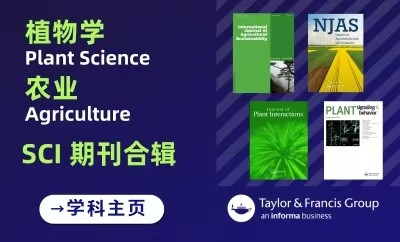













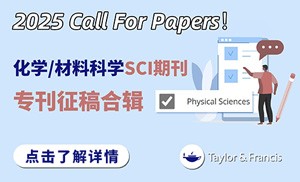


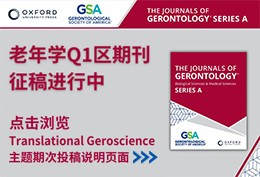


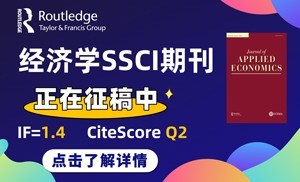




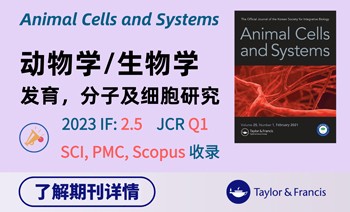


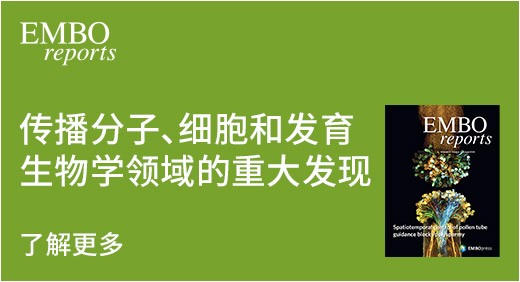



















 京公网安备 11010802027423号
京公网安备 11010802027423号